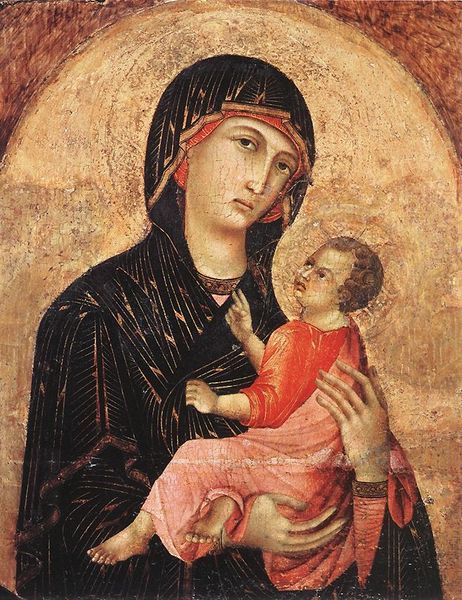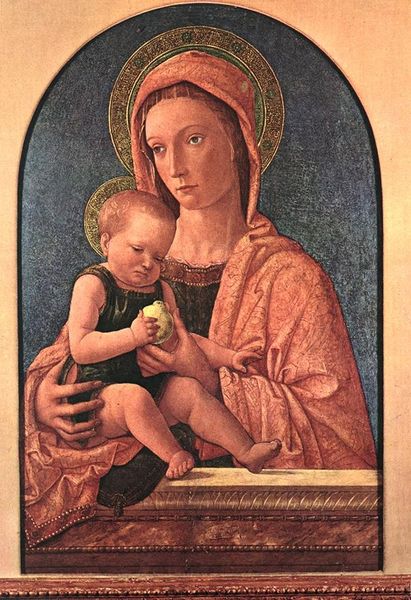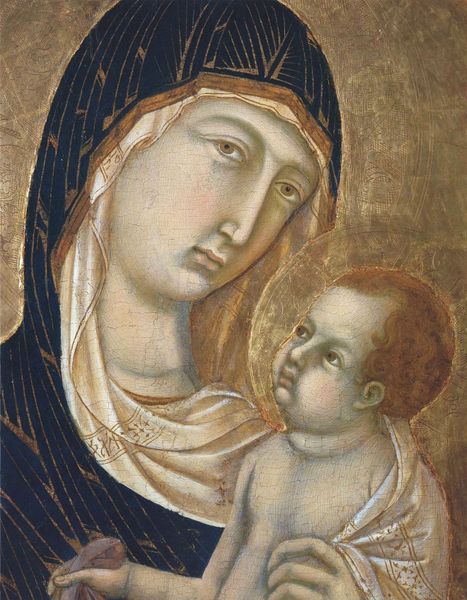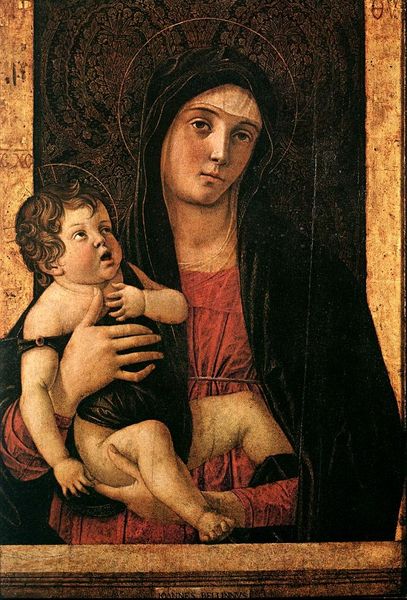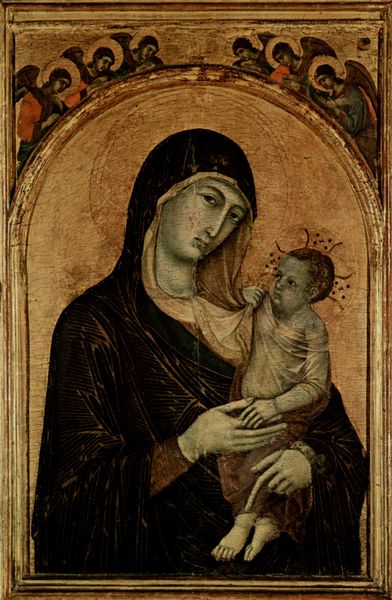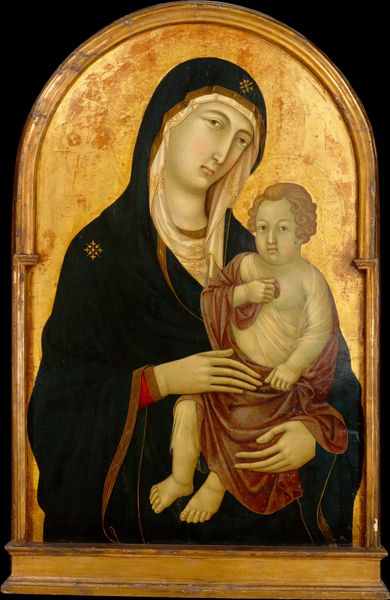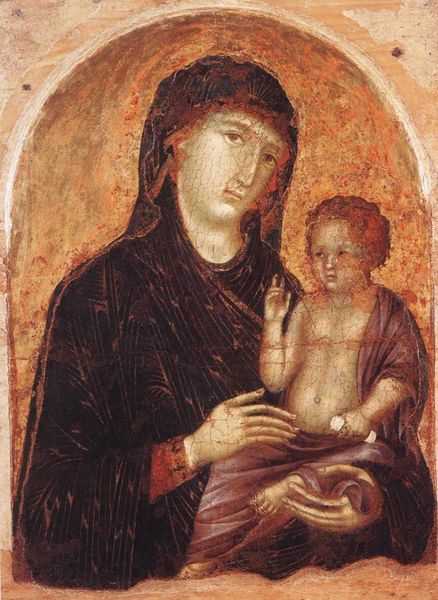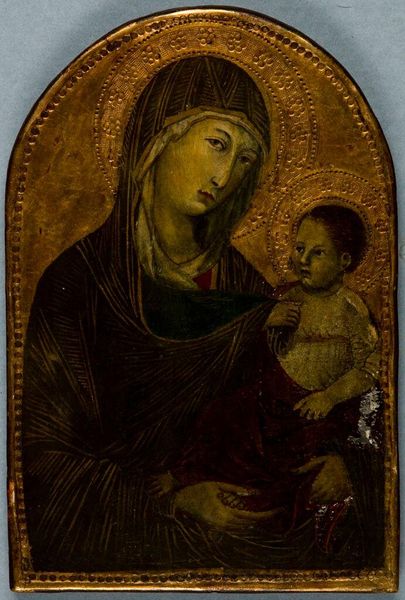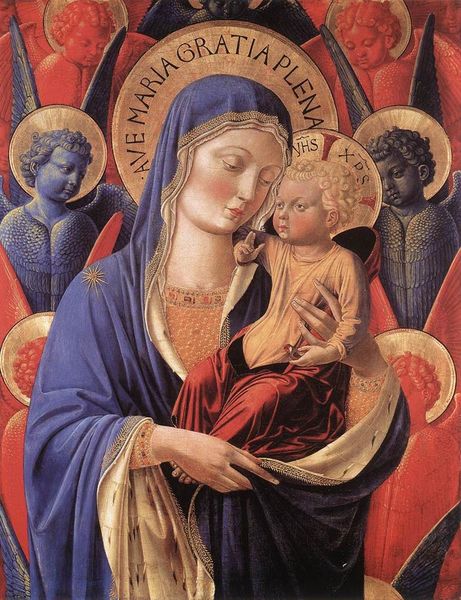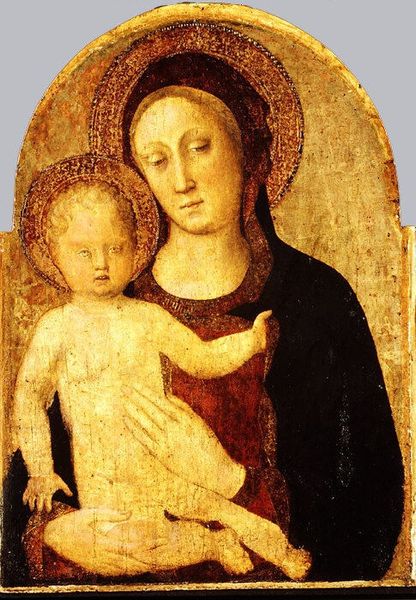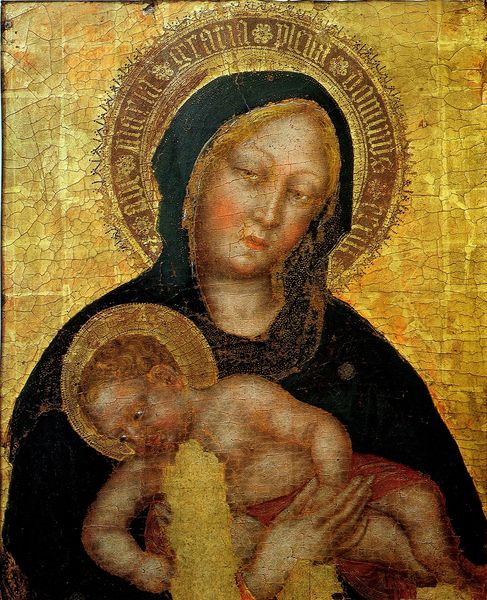
tempera, painting
#
portrait
#
medieval
#
tempera
#
painting
#
oil painting
#
christianity
#
history-painting
#
italian-renaissance
#
early-renaissance
#
virgin-mary
#
christ
Copyright: Public domain
Curator: Looking at Giotto’s “Madonna and Child” from around 1330, what strikes you immediately? Editor: The solemnity. It's quieter, more intimate than I expected. Even with the gold leaf practically shouting opulence, there’s something so contained, almost introspective, in their expressions. Curator: Indeed. Giotto was painting in a time when artistic conventions were transitioning. The tempera on panel technique itself connects him to older traditions. What’s fascinating is his pioneering movement towards a more naturalistic representation of figures. It’s part of why he's regarded as a cornerstone of the Italian Renaissance. Editor: You see that subtle modeling in the faces, that's it isn't it? I suppose that even in that time I still see so many other, flatter icons, and this... has dimension! And tell me, that little flower in her hand? It almost looks real. Curator: Absolutely! Giotto is interested in observation, imbuing the figures with a weight, a three-dimensionality unseen before. Now, the flower. Art historians see this offering from Madonna as a symbol, often associated with hope and Christ's sacrifice. Notice, as well, how the Virgin’s gaze avoids direct interaction with the viewer; that draws us inward toward an intensely sacred connection. It’s a gentle, yet authoritative assertion of the divine Mother’s role. Editor: Ah, yes. That's fascinating because her tenderness almost fools you. It's interesting to consider how this reflects changing societal views. Did the increased focus on the human side of the divine perhaps offer viewers solace or guidance during a time of frequent unrest and change? Curator: I believe you're absolutely on the right track. With this more tangible approach, images like this offered people of the time a powerful reflection, a spiritual validation that touched more than the head, connecting at heart level. Editor: Looking at it again, I’m struck how it almost vibrates with humanity, even centuries later. Amazing. Curator: Precisely. The profound shift Giotto introduced in how humanity, and divinity were depicted, rippled throughout the art world for generations. It shifted how people interacted with sacred art and more broadly, with the world.
Comments
No comments
Be the first to comment and join the conversation on the ultimate creative platform.

